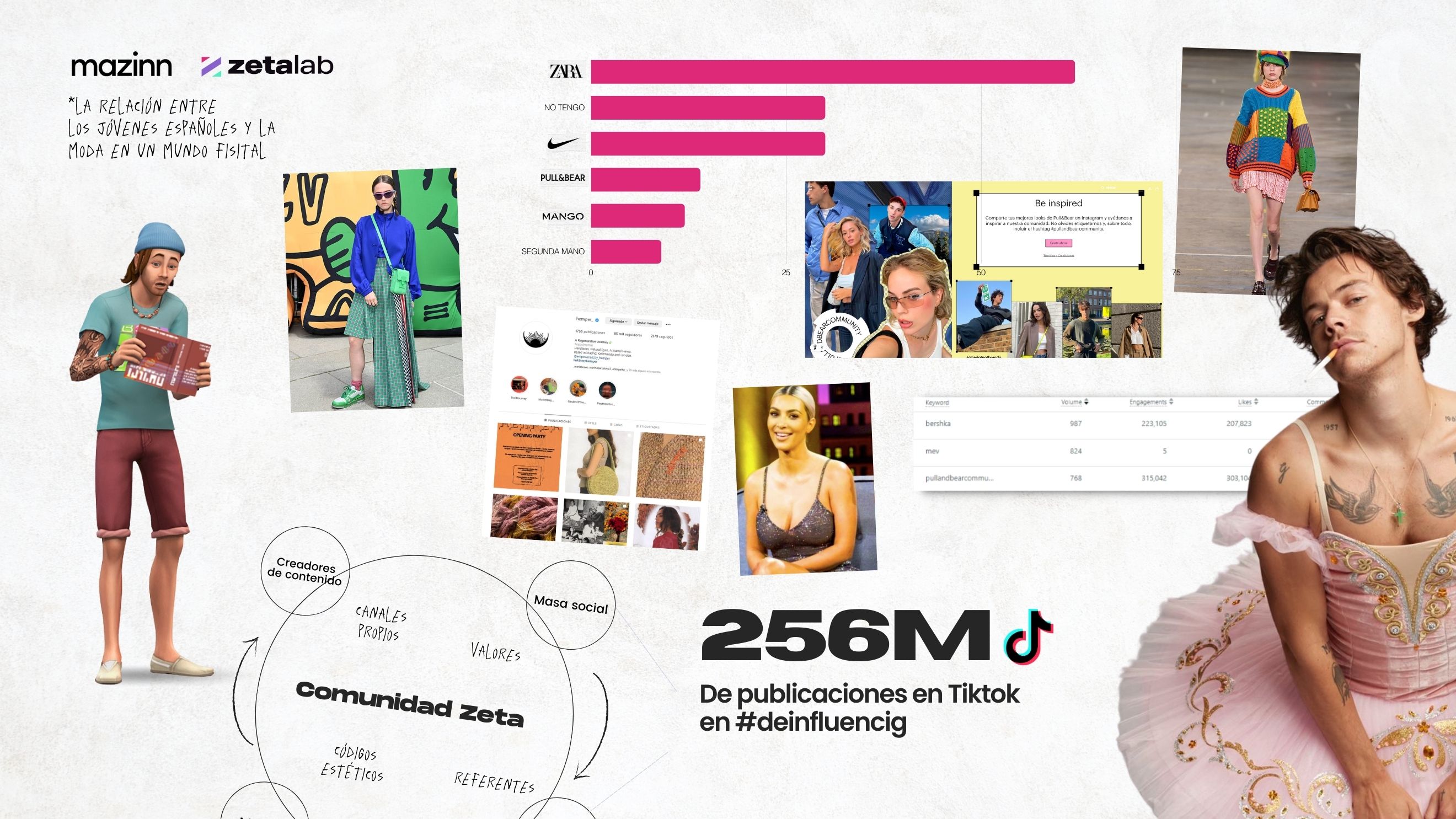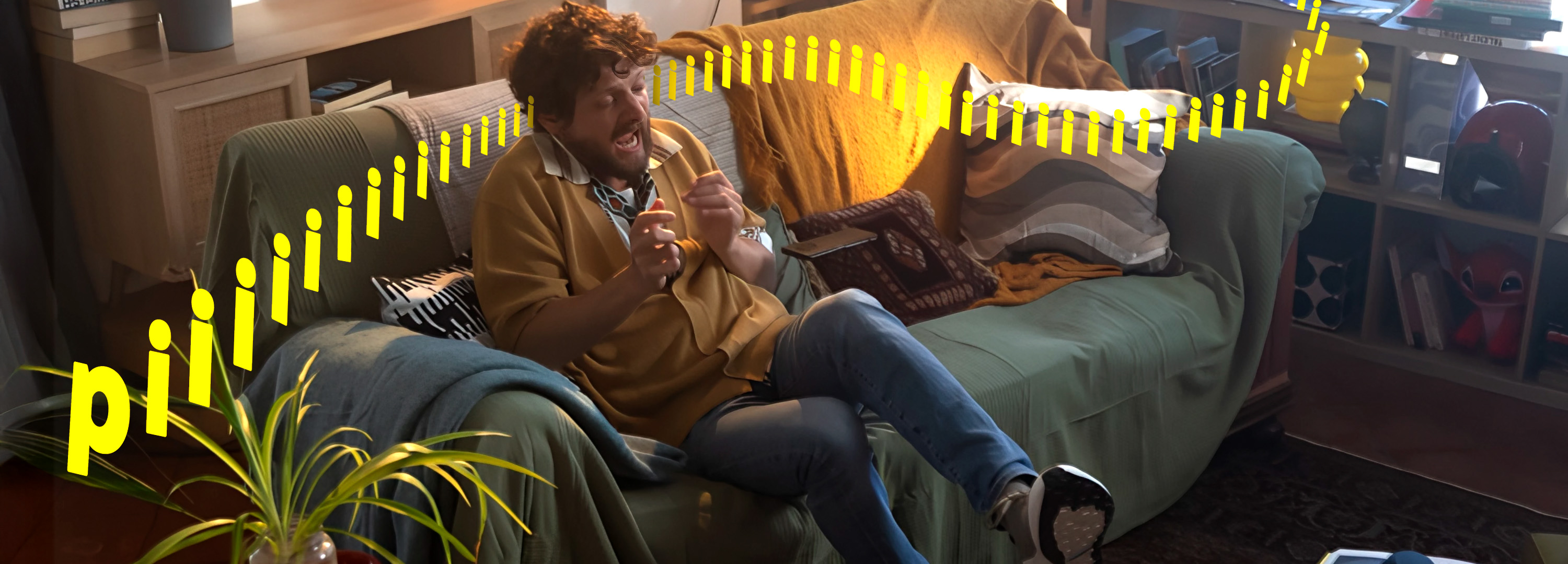Spanish Gen-Z and Fashion in a ‘phygital’ world
- Date
- Written by Miguel Pereira
“Generación Z española y Moda en un mundo ‘fisital’” is a study produced by Mazinn, our ecosystem’s consultancy firm expert in Generation-Z, and Zetalab, the consultancy firm from the Metric Salad technology group, specialist in zoomer channels and technology; it dispels some of the myths and false beliefs around the relationship young people have with fashion and emerging technologies, such as digital shopping or their concern for sustainability. The study also points to a series of opportunities that fashion brands can use to strengthen their connection with Gen-Z.
The report is the result of a survey and interviews with 360 young Spaniards aged between 13 and 25. The document also features the conclusions drawn from interviews with experts in the field, such as Pepa Bueno, executive director of ACME; Coro Saldaña, digital management expert for retail and fashion companies; Lourdes Garzón, director of Mujer Hoy; Gema Gómez, executive director and founder of Slow Fashion Next, and Javier Plazas, expert in digital transformation, metaverse and fashion.
Some of the main findings about young people in their relationship with fashion, according to ‘Spanish Generation-Z and Fashion in a phygital world’, are:
– Young people still prefer in-store shopping. 43% select their purchase channel (online or in-store) depending on the garment. If they have to choose a channel, 41% of 15-25 year olds prefer to buy clothes in a physical shop (while only 11% are inclined to buy online). Despite being the first generation of “digital natives”, the physical experience still offers them a few pluses. In fact, Gen-Z today does not have an attachment or a clear preference for one channel, but rather their shopping experience is more “omnichannel”, varying widely between physical and digital touchpoints, depending on the type of garment and the moment. Beyond the usefulness of being able to try on clothes, in-store shopping remains “a leisure plan” in itself for many young people. However, the other steps of the ‘customer journey’, such as discovery, recommendation or influence, mostly take place via digital channels and social media.
– With regard to the metaverse, although it is close, there are still some barriers to making it a regular channel. There are predictions that the metaverse will reap more than €50 billion in revenue for fashion and luxury brands by 2030. However, according to Javier Iturralde de Bracamonte, Director of Zetalab, for the most adult range of Gen-Z surveyed, those over 17, there are still hurdles for the metaverse to overcome before becoming a regular channel of fashion consumption. “Among the barriers identified by young people”, he says, “are the lack of connectivity, whether the experience can be fully immersive or whether the glasses are more accessible and ergonomic, among others. Still, the use of video games and augmented reality could be seen as an intermediate step towards more immersive ecosystems.” The two most used metaverses by the youngest respondents (13-17) are Roblox (67%) and Horizon Worlds (43%), where the majority spend between 5-10 hours per week.
– Young people consume a lot of second-hand fashion, but not because it is more sustainable. Only 24% of young people who resell their clothes do so in order to consume more responsibly. However, 41% do it to “earn some cash” and 30% do it to vary their wardrobe.
In fact, the study shows the growth in the purchase of second-hand clothing in recent years, as “a solution that lets them acquire more unique and affordable products without feeling so guilty about it”, says Jimena Biosca, project manager at Mazinn.
Opportunities
The study also identifies several opportunities for fashion brands in 2023. These include:
- Creating spaces and two-way conversations with young people. The role of Community Management, as the key to the brand, needs to evolve:
- From responding to comments to generating meaningful conversations on social media.
- From planning the perfect content to having moments of “live” expression: streaming, Discord, in-person meetings etc.
- From communicating through models and sessions to promoting UGC (User-Generated Content) and natural content.
- Enhancing experiences in a physical space as a point of brand-user and user-to-user interaction. Events, pop-ups… are opportunities to make a real connection with the brand’s community, creating a “peer-to-peer” conversation and enhancing the relationship.
- Diseñar en los nuevos canales estrategias de valor adaptadas a los valores y gustos de los Z. Using the new channels to design value strategies that adapt to the values and tastes of Gen-Z. To make the most of what the metaverse or the different immersive experiences can offer, it is essential to design strategies that are closely aligned with zoomers’ values, consumption habits and expectations. On the other hand, not only should these emerging ecosystems not be giving up on the physical reality, so essential to fashion and luxury products, but they can also have a physical alternative of a digital element or vice versa, as Nike and its metaverse Nikeland have done. Another exciting opportunity is the possibility of creating innovative and unique shopping experiences that lead to hyper-personalisation and capturing in-depth behavioural data to spawn even more highly tailored experiences, which is increasingly important for this generation. Finally, the metaverse will be unparalleled in terms of market research and product development, being able to involve consumers in this process.
View the full study here: http://zetalabxmazinn.com




